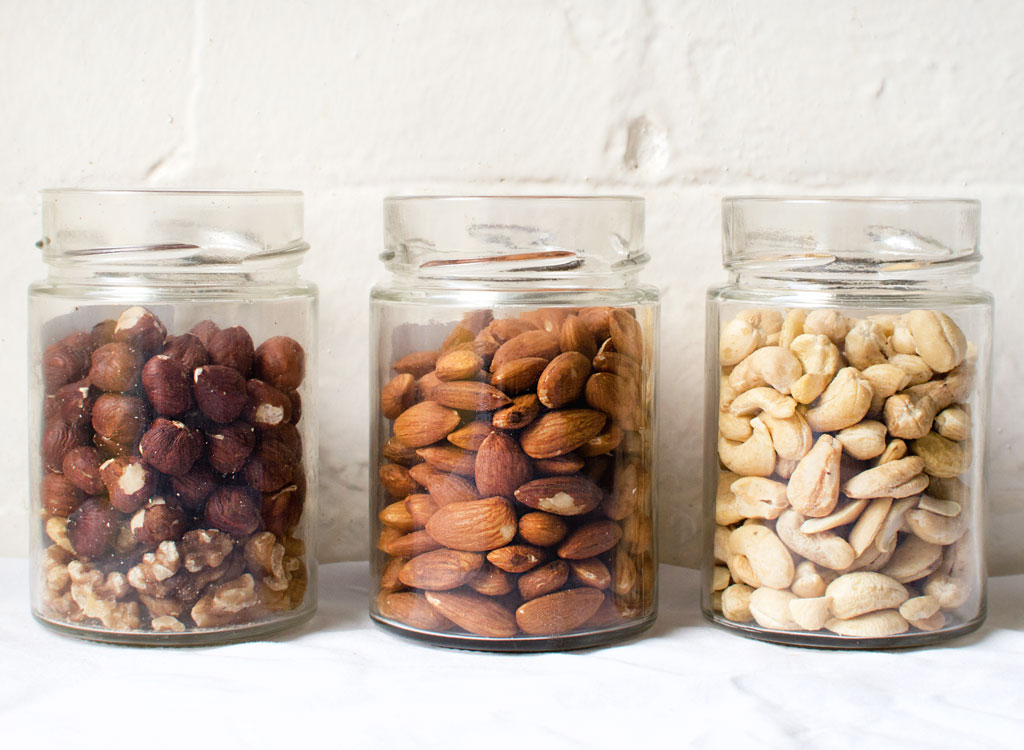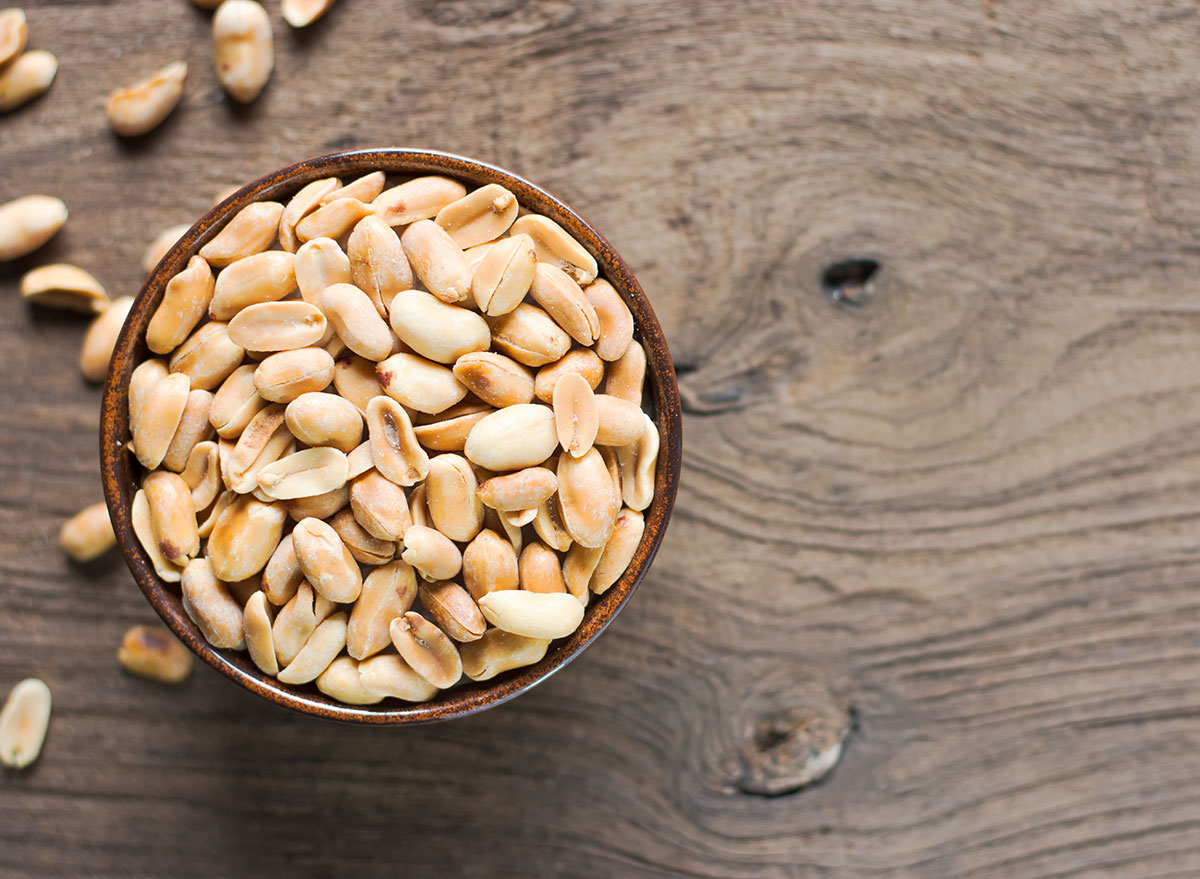28 Best Foods to Eat for Magnesium

We all know that our bodies need a steady supply of nutrients, but beyond the weight loss trifecta—fiber, protein and healthy fats—did you realize you needed to eat more foods high in magnesium?
Why magnesium is an important nutrient in your diet.
The frequently overlooked mineral, magnesium, helps with muscle contraction and relaxation. Magnesium is one of the common electrolytes along with sodium, potassium, and calcium.
Magnesium is involved in over 300 reactions in the body including:
- Supporting the absorption and retention of other electrolytes
- Blood sugar regulation
- Cellular energy metabolism
- Muscle and nerve function
- Protein synthesis—which, in turn, increases lean muscle mass
- Immune system support
How much magnesium do you need per day?
The daily value of magnesium is 400 milligrams; however, this DV will change with the adoption of the new nutrition label on January 1, 2020. The updated magnesium DV will be 420 milligrams.
For this article, we are using the 420-milligram number to calculate percent DV.
Signs you’re not getting enough magnesium in your diet.
Sixty-eight percent of Americans don’t meet the recommended levels of dietary magnesium. Inadequate magnesium intake is linked to numerous negative health outcomes including hypertension, cardiovascular disease, Alzheimer’s disease, and type II diabetes.
Chances are, if your groceries come with a printed nutrition label—instead of coming from the ground—you’re lacking in this important nutrient. Ultra-processed foods that are commonplace in the typical American diet tend to be poor sources of magnesium, which reduces the amount available for your body to use.
Health symptoms associated with low magnesium intake and magnesium deficiency, also known as “hypomagnesemia”, include:
- Feeling moody, stressed, depressed, or anxious
- Irritability and agitation
- Migraine headaches
- Fatigue, lethargy, and low energy
- Loss of appetite
- Weakness
What are the best food sources of magnesium?
“The amount of magnesium in food is dependent largely on the amount of nutrients in the soil in which the food is grown,” says Isabel Smith, MS, RD, CDN, registered dietitian and founder of Isabel Smith Nutrition. “Typically, the greatest sources of magnesium include nuts and green leafy vegetables,” she adds.
There are few foods that are considered “excellent” sources of magnesium, meaning one serving contains more than 20% DV of the nutrient. The best food sources of magnesium are:
- Pumpkin Seeds: 156 mg magnesium (37% DV) per 1 ounce, roasted
- Spinach: 157 mg magnesium (37% DV) per 1 cup, boiled
- Swiss Chard: 150 mg magnesium (36% DV) per 1 cup, boiled, chopped
- Brazil Nuts: 107 mg magnesium (25% DV) per 1 ounce
- Almond Butter: 89 mg magnesium (21% DV) per 2 tablespoons
- Cashew Butter: 83 mg magnesium (20% DV) per 2 tablespoons cashew butter
- Atlantic Mackerel: 82 mg magnesium (20% DV) per 3 ounces, cooked
To round out your diet and ensure you’re getting enough of this essential nutrient, add more of these foods high in magnesium as well as the following good sources of magnesium into your meal plan now.
Nuts High in Magnesium
Almonds, cashews, and peanuts are healthy snacks that also happen to be foods with magnesium. They all contain between 10 and 20 percent of your daily value, making nuts a “good” source of magnesium.
Whole nuts aren’t the only way you can get magnesium. The nut butter form of theses nuts high in magnesium is an equivalent and convenient source of the electrolyte.
Almonds

79 mg magnesium (19% DV) per 1 ounce, dry roasted
89 mg magnesium (21% DV) per 2 tablespoons almond butter
Almonds are snack time royalty, lavishly praised as one of the top healthy snacks — but are you eating them? They’re not only packed with vital nutrients like magnesium, but also contain a decent amount of healthy unsaturated fats. Due to its nutrient content, a small handful of almonds per day can help protect your heart, fight inflammation, support your immune system and could reduce your cancer risk. Not to mention, studies have also linked the consumption of nuts, like almonds, to weight loss. So get snackin’!
Cashews

74 mg magnesium (18% DV) per 1 ounce, dry roasted
83 mg magnesium (20% DV) per 2 tablespoons cashew butter
These naturally sweet nuts boast a who’s who of vital minerals, including copper, phosphorus, manganese, zinc, iron, potassium, selenium and calcium—and that’s in addition to being one of the best foods high in magnesium. Necessary minerals like these help your body function at its optimal level. Like almonds, cashews are also a great source of healthy fats that will help you feel satisfied and lower your risk for heart disease. Just be sure to stick to a serving size (one ounce or about one small handful) — those healthy fats come with a high-calorie price tag.
Peanuts

50 mg magnesium (12% DV) per 1 ounce, dry roasted
54 mg magnesium (13% DV) per 2 tablespoons peanut butter
Good old peanuts are a worthy source of magnesium that are affordable and easy to find. Because not many of us snack on peanuts regularly, peanut butter might be your go-to preparation method to get in your magnesium dose. Spread a couple of tablespoons on a slice of whole-grain toast, add a spoonful to a smoothie, or blend a healthy portion with some soy sauce, Sriracha, rice wine vinegar, ginger, garlic, and a touch of sugar to use as a dressing on noodles or crisp lettuce.
Vegetables High in Magnesium
Most of the magnesium in vegetables comes from the soil in which they’re grown. Magnesium is a key element in chlorophyll (the pigment that gives plants their green color), which is why leafy greens are some of the best magnesium-rich foods.
To get the most magnesium for your buck, make sure to cook your greens. This increases the amount of magnesium you get per serving by up to 6 times. In addition to leafy greens, other vegetables high in magnesium include potatoes, broccoli, and carrots.
Spinach

157 mg magnesium (37% DV) per 1 cup, boiled
24 mg magnesium (6% DV) per 1 cup, raw
Spinach has definitely earned some bragging rights when it comes to healthy foods. Aside from being a great source of magnesium, this leafy green boasts an impressive amount of vitamin K—more than most sources—a nutrient vital for blood clotting and bone health. Oh, and we mustn’t forget why Popeye loves this green so much—for the protein. On average, spinach contains about one gram of protein and only seven calories per cup raw and 5 grams of protein for 41 calories per boiled cup.
Swiss Chard

150 mg magnesium (36% DV) per 1 cup, boiled, chopped
29 mg magnesium (7% DV) per 1 cup, raw
Chard is the leafy green that’s as beautiful as its name is ugly; the big leaf with the vibrant red stem running through it packs plenty of magnesium, as well as antioxidants and other vitamins. These nutrients work together to promote healthy vision, boost immunity and even protect against cancer. It’s also a good source of fiber (like most greens), so it will help beef up your salad, not your waistline.
Other vegetables besides leafy greens with good levels of magnesium include:
- Russet Potato: 52 mg magnesium (12% DV) per baked potato
- Broccoli: 33 mg magnesium (8% DV) per 1 cup, cooked
- Kale: 30 mg magnesium (7% DV) per 1 cup, boiled
Beans High in Magnesium
Beans aren’t a group of foods highest in magnesium, but a half-cup serving of many types of beans can be good sources of the nutrient.
Edamame

50 mg magnesium (12% DV) per 1/2 cup, frozen, prepared
These soybean pods are a great anytime snack because they’re an excellent source of magnesium, folate, and potassium. These nutrients can help lower blood pressure and support heart health, reducing your risk for heart disease. This popular appetizer also boasts a whopping 9 grams of protein per half-cup. Spring for fresh edamame in the summer months because it’s in season, and frozen edamame is sure to do the trick year-round.
Other beans and bean products that contain magnesium include:
- Black Beans: 42 mg magnesium (10% DV) per 1/2 cup, canned
- Soymilk: 39 mg magnesium (9% DV) per 1 cup, unsweetened
- Kidney Beans: 35 mg magnesium (8% DV) per 1/2 cup, canned
Seeds, Cereals, and Grains High in Magnesium
When looking to consume grains and cereals as food sources of magnesium, it’s best to opt for less-processed versions. Refining grains removes the nutrient-rich germ and bran, which lowers the magnesium content substantially. However, some refined grains (like processed breakfast cereals) may be fortified with magnesium, so be sure to check the nutrition label.
- Pumpkin Seeds: 156 mg magnesium (37% DV) per 1 ounce, roasted
Pumpkin seeds are by far one of the best food sources of magnesium. Add these on top of salads, throw into trail mixes, top your yogurt, toss into homemade granola, or add to smoothies. - Amaranth: 80 mg magnesium (19% DV) per 1/2 cup, cooked
- Shredded Wheat Cereal: 65 mg magnesium (15% DV) per 1 cup
- Oatmeal: 63 mg magnesium (15% DV) per 1 cup
- Quinoa: 59 mg magnesium (14% DV) per 1/2 cup, cooked
- Flaxseed: 55 mg magnesium (13% DV) per 2 tbsp, ground
- Whole Wheat Bread: 48 mg magnesium (11% DV) per 2 slices
- Brown Rice: 43 mg magnesium (10% DV) per 1/2 cup, cooked
Fruits High in Magnesium
Like with vegetables, fruits get their magnesium from the soil in which they’re grown. If you’re looking to increase your magnesium intake, fruits can help you get there but don’t rely on them as your main source of the mineral.
- Banana: 32 mg magnesium (8% DV) per 1 medium banana
- Avocado: 29 mg magnesium (7% DV) per 1/2 avocado
Fish, Meat & Dairy Products High in Magnesium
Animal products—beef, chicken, and fish—are all low sources of magnesium. Low magnesium concentrations are found in some dairy products. The following are the best sources of animal-based magnesium.
- Atlantic Mackerel: 82 mg magnesium (20% DV) per 3 ounces, cooked
Mackerel is the only item in this section that is considered to be an excellent source of magnesium, containing 20% of your daily value. This white fish is best cooked in parchment paper with butter, lemon, white wine, and a medley of veggies. - Chicken Breast: 35 mg magnesium (8% DV) per 1 cup
- 2% Milk: 27 mg magnesium (6% DV) per 1 cup
- Farmed Atlantic Salmon: 26 mg magnesium (6% DV) per 3 ounces, cooked
- Halibut: 24 mg magnesium (6% DV) per 3 ounces, cooked
- Low-fat Greek Yogurt: 22 mg magnesium (5% DV) per 7 ounces








